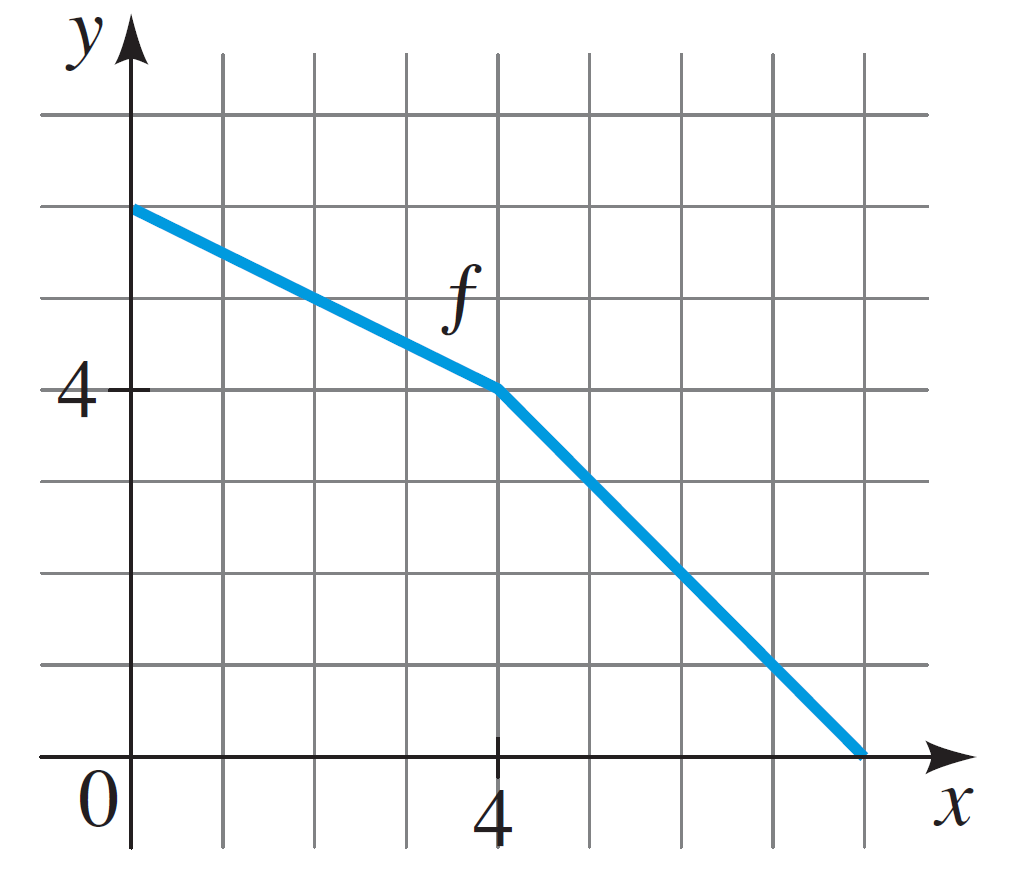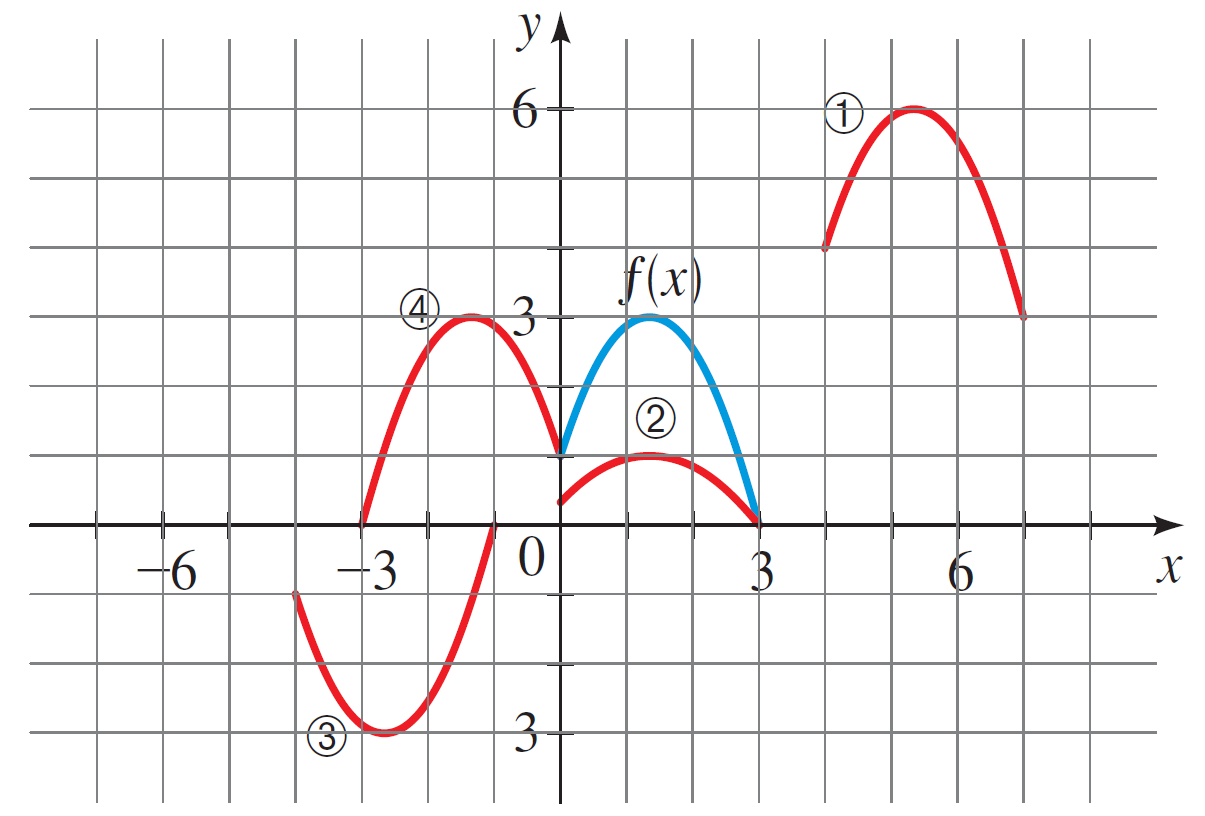Homework 6
Directions:
- Show each step of your work and fully simplify each expression.
- Turn in your answers in class on a physical piece of paper.
- Staple multiple sheets together.
- Feel free to use Desmos for graphing.
Answer the following:
- For each red function, write out what the transformation from $f(x)$ should be:
- Graph the following functions using transformations. Include at least two transformed points and ordered of transformations you apply them in for full credit.
- $g(x) = \sqrt{x + 4} - 3$
- $g(x) = -(x-1)^2$
- $g(x) = -2 - \sqrt{-2x + 6}$
- $g(x) = -\lvert-2x - 2\rvert + 4$
- $g(x) = 2(-2x+6)^2 - 1$
- Suppose \[f(x) = 2x^2 + x \qquad g(x) = x^2 - x \qquad h(x) = x^2 - 1 \qquad k(x) = x^4\] Evaluate and expand the following:
- $f(x) + g(x) + h(x)$
- $f(x) - g(x)$
Hint Look at how many terms you are substituting. Don't forget...
- $g(x)h(x) - k(x)$
- $f(x)\left[k(x)\right]^2$
- $\dfrac{g(x)}{h(x)}$ (also find the domain).
- Find and simplify the formula for $h(x)$.
- What are the $x$-values of the holes in $h(x)$?
- What is the domain of $h(x)$?
- $\dfrac{g'(x)f(x) - f'(x)g(x)}{\left[g(x)\right]^2}$
Hint Look at how many terms you are substituting. Don't forget... - $f'(x)g(x) + f(x)g'(x)$
Hint Expand because like terms are created.
- $f\circ g$
- $f(g(0))$
- $g \circ f$
- $f \circ f$
- $g \circ g$
- $f \circ f \circ f$
Choosing $f(x) = x$ or $g(x) = x$ is zero credit for this problem.
- $F(x) = (x-3)^4$
- $F(x) = (2x-3)^{-\frac{1}{2}}$
- $F(x) = \sqrt{1 - \sqrt{x}}$
- $F(x) = \sqrt{(x^2 + 2x + 3)^3}$
- $f(x) = x^2, \qquad g(x) = \sqrt{x}$
- $f(x) = 2 - 5x, \qquad g(x) = \dfrac{2 - x}{5}$
- $f(x) = \dfrac{1}{x-1}, \qquad g(x) = \dfrac{1 + x}{x}$
Hint This is a compound fraction. I advise evaluating $f\circ g$ so you only need to deal with the denominator.
Hint Look at the graph. Which part can you delete?
- $f(x) = \sqrt{x}$
- $f(x) = x^2 - 77$
Hint Transformations. - $f(x) = \lvert x \rvert + 1$
Hint Check one-to-one first. Maybe inverse doesn't exist.
- $f(x) = 3x + 5$
- $f(x) = (x-1)^2$
- $f(x) = \dfrac{x}{x + 2}$
- $f(x) = 4-x^2, \qquad x \geq 0$
- $f(x) = \sqrt{4 - x^2}, \qquad 0 \leq x \leq 2$
- $f(x) = \lvert 3x - 6 \rvert, \qquad x \geq 0$
- $f(x) = 2 + \sqrt{x + 3}$
Hint Similar technique to solving root equations. - $f(x) = \dfrac{2x + 4}{x - 7}$
 find
find
- $f^{-1}(2)$
- $f^{-1}(5)$
- $f^{-1}(6)$
- $f(x) = x^2 - 6x$
- $f(x) = x^2 - 4x + 1$
- $f(x) = -2x^2 - 8x$
- $f(x) = -3x^2 + 6x$
- $f(x) = x^2 - 6x$
- $f(x) = 3x^2 - 6x + 1$
- $f(x) = x^2 - 8x + 8$
- $g(x) = 2x^2 + 8x + 11$
